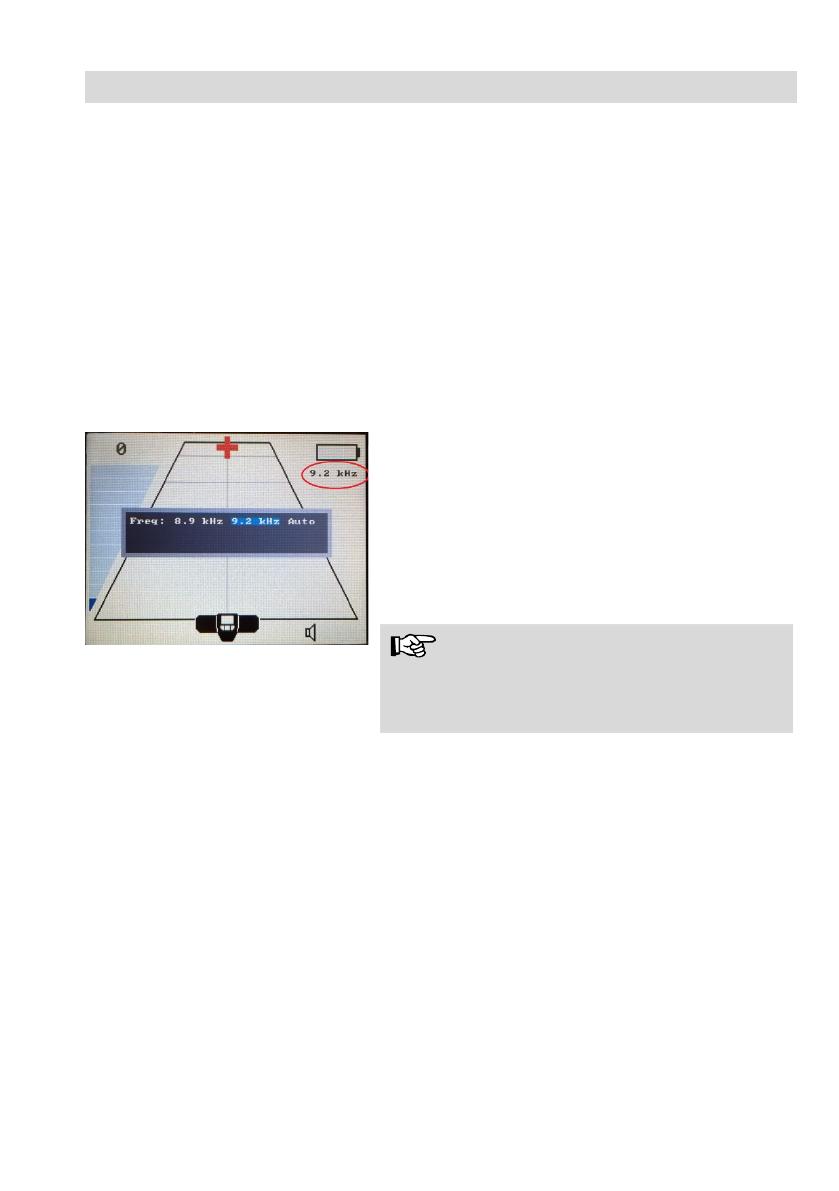
42
marche/Arrêt
• Pour allumer le Locator , appuyez brièvement
sur le bouton Marche/Arrêt (ill.1, pièce 2).
Lorsque l’appareil est en marche, le bord
supérieur du bouton d’alimentation s’allume
en vert.
Après environ 2 secondes apparaît l’affichage à
l’écran.
Pour arrêter le Locator, maintenez appuyé
pendant environ 1 seconde le bouton
Marche/Arrêt.
fréquence
4: Menu de sélection de la fréquence.
La fréquence sélectionnée apparaît dans
le coin supérieur droit de l'écran, ici
marquée dans l'image.
Avant de localiser la tête de caméra, l'utilisateur
doit sélectionner la fréquence que le localisateur
doit chercher
Vérifiez d'abord la fréquence de votre tête de ca-
méra. (Mode d'emploi de la caméra, chapitre "Ca-
ractéristiques techniques")
Le localisateur offre les options suivantes : 8,9
kHz, 9,2 kHz et Auto
Si "Auto" est sélectionné, le localisateur dé-
termine automatiquement la fréquence de
l'émetteur de la tête de caméra.
NOTE!
Si la fonction "Auto" a été sélectionnée, le locali-
sateur ne peut localiser la tête de caméra que si
elle se trouve à moins de 1 m.
La fréquence sélectionnée est indiquée dans le
coin supérieur droit de l'affichage du localisateur,
voir Fig. 2, Partie 8.
Procédez comme suit pour faire votre sélec-
tion :
Lorsque le localisateur est activé, appuyez
brièvement sur la touche Marche/Arrêt pour
accéder au menu de sélection.
Utilisez les boutons -/+ pour sélectionner la
fréquence.
Appuyez brièvement sur le bouton
marche/arrêt pour confirmer votre sélection.































































































